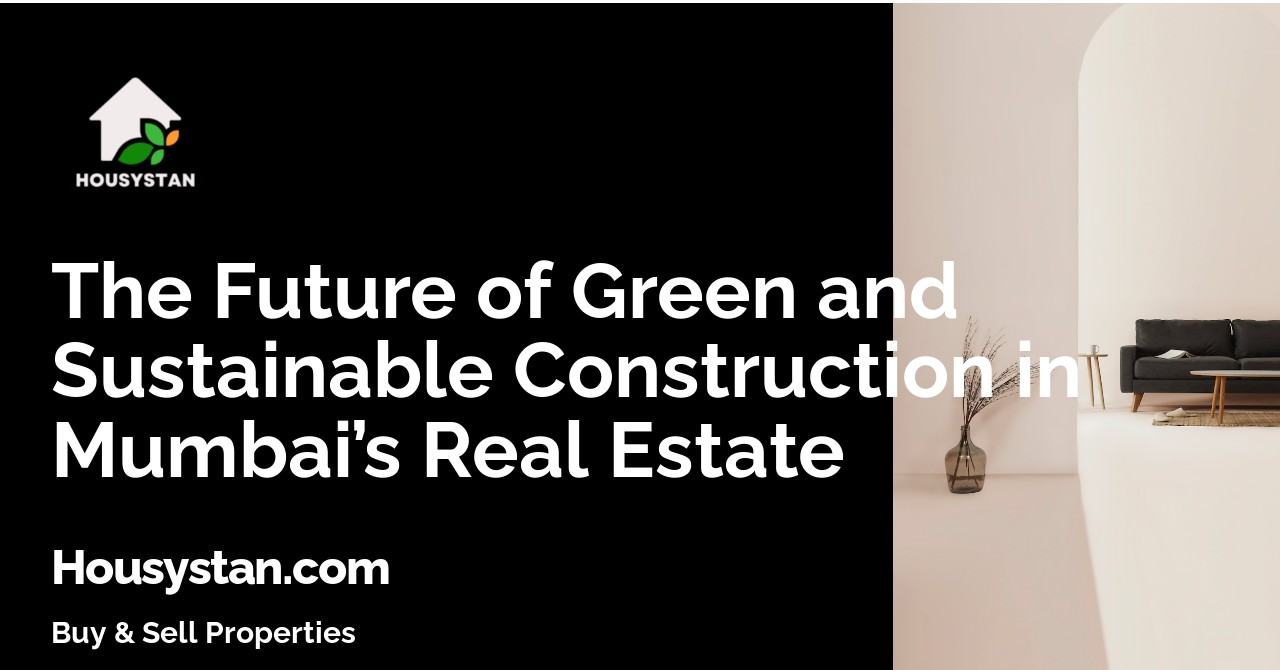The Future of Green and Sustainable Construction in Mumbai’s Real Estate
Read latest blogs and articles from Housystan

The Information mentioned here was last updated on:
14/12/2025The future of green and sustainable construction in Mumbai’s real estate sector is rapidly transforming the city’s skyline, setting new benchmarks for eco-friendly urban development. As Mumbai continues to grow as India’s financial and commercial powerhouse, the demand for environmentally responsible buildings is at an all-time high. Developers, investors, and homebuyers increasingly prioritize sustainability, recognizing the long-term benefits of energy-efficient, resource-conscious construction methods in a densely populated metropolis.
With the Maharashtra government and Mumbai Metropolitan Region Development Authority (MMRDA) actively promoting green building initiatives, the city is witnessing an upsurge in LEED-certified and IGBC-rated projects. These certifications reflect a commitment to reducing carbon footprints, conserving water, and utilizing sustainable materials throughout the building lifecycle. Modern real estate developments in Mumbai, from luxury residences in South Mumbai to commercial complexes in Bandra Kurla Complex and Powai, now emphasize features such as rooftop solar panels, rainwater harvesting systems, natural ventilation, and low-emission construction materials.
One key driver of this eco-conscious shift is Mumbai’s unique climate and coastal location, which necessitate innovative design solutions to tackle challenges like rising temperatures, monsoon flooding, and air pollution. Architectural firms and construction companies are leveraging advanced technologies, including green roofs, vertical gardens, and smart energy management systems, to create buildings that are both resilient and energy-efficient. These advancements not only enhance indoor air quality and occupant comfort but also contribute to substantial reductions in energy bills and maintenance costs for property owners.
- Verified Tenants/Buyers
- Unlimited Property Listing
- Zero subscription/charges fee
Furthermore, Mumbai’s real estate market is increasingly influenced by global trends and local consumer preferences that favor wellness-oriented living spaces. The integration of green infrastructure, such as landscaped open spaces and community gardens, is becoming standard practice in new developments. Government incentives, tax benefits, and streamlined approval processes for sustainable projects are also encouraging more builders to adopt eco-friendly practices.
In conclusion, the future of green and sustainable construction in Mumbai is bright, with stakeholders across the real estate ecosystem embracing practices that support environmental stewardship and urban resilience. As Mumbai sets a precedent for sustainable urban growth, it not only improves the quality of life for its residents but also positions itself as a leader in eco-friendly urban development in India and beyond.